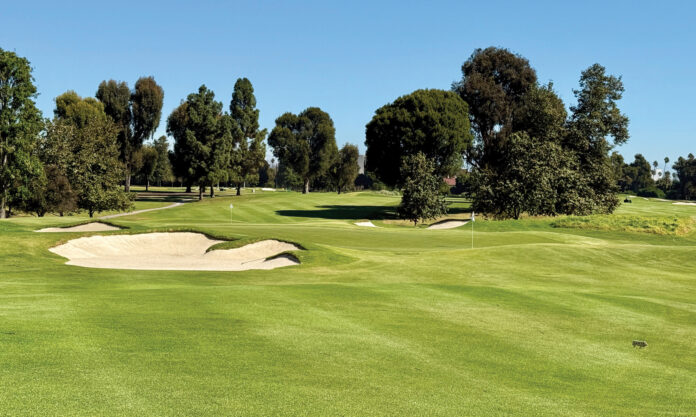For years, golf course superintendents have relied on core aeration to maintain turf health. This disruptive process aims to reduce compaction, improve oxygen transfer, and control thatch. However, a more effective and cost-efficient approach is gaining traction and becoming the latest standardized practice in the turf industry: biological soil management.
Core aeration, while seemingly beneficial, is actually a significant financial burden, considering cost, lost revenue, and known to harm soil health in the long run. A healthier approach focuses on rehabilitating the soil’s biology, which is the foundation for overall well-being of the grass.
“Soil is the most underutilized asset on every golf course.”
Parker Cohn CEO Performance Resource Management
Investing in biological soil management, branded “BIOS” by PRM, offers golf course owners and operators a remarkable return on investment. Healthy soil translates to improved playing conditions, reduced maintenance costs, and increased revenues. Win-win-win.
Golf courses that adopt BIOS realize remarkable results. Some courses have even eliminated core aerification. A thriving soil ecosystem, rich with microorganisms, naturally decomposes organic matter, cycles nutrients, and enhances soil quality. This leads to increased oxygen transfer, denser turf, improved irrigation efficiency, and reduced thatch. The repercussions of healthy soil and improved agronomics translate to serious financial benefits, including cost savings and higher revenue opportunities.
Eliminating core aeration saves on labor, equipment, fuel, and sand costs. Additionally, courses avoid lost revenue from course closures (zero revenue) and discounted green fees (for 10+ days) that follows from pulling cores.
Brentwood Country Club (Los Angeles) implemented BIOS to eradicate aerification in their roughs to save $150,000 annually while improving conditions, saving 20 million gallons of water, and substantially reducing fertilizer applications. But soil science isn’t only providing value for private golf courses in high-end markets. For instance, The City of Tucson implemented BIOS across half of their municipal golf courses in 2013. They eliminated the financial disruptor of core aerification and posted their largest profit in history – over $730,000 – due to improved conditions, increased rounds played, and significant labor, water, and chemical savings. Pinecrest Golf Course, a municipal facility in Eastern Idaho, transitioned to a BIOS program and saved $15,000 in maintenance costs alone. They also generated an additional $40,000 in revenue due to increased rounds played and full tee sheets at regular prices.
“We saved over 100-acre feet of water during one of the hottest years recorded (2012), while improving the playing surface and increasing the numbers of rounds played.”
– City of Tucson
The evidence is clear: biological soil management is a superior alternative to core aeration. It’s time for golf course operators to embrace this proven, innovative approach to reap the benefits that healthy soil provides including increased profitability and improved performance of playing conditions…the best of both worlds.

